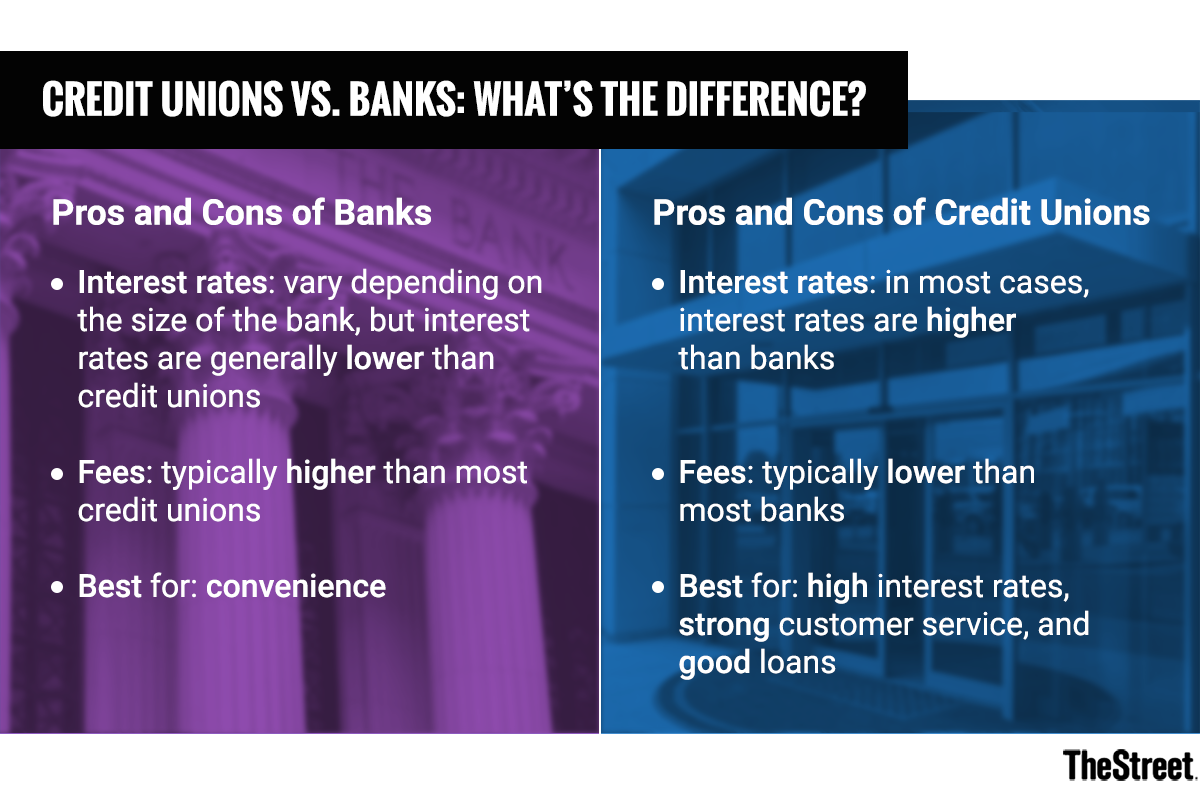Experience the Best of Financial at a Wyoming Credit Union: Your Citizen Financial Partner
Experience the Best of Financial at a Wyoming Credit Union: Your Citizen Financial Partner
Blog Article
The Ultimate Overview to Comprehending Lending Institution

Lending institution stand as special economic entities, rooted in concepts of common support and member-driven procedures. Nevertheless, beyond their fundamental values, understanding the complex operations of cooperative credit union includes a deeper exploration. Deciphering the complexities of membership qualification, the advancement of services used, and the distinctive advantages they bring requires a thorough exam. As we browse via the complexities of cooperative credit union, an informative trip awaits to clarify these member-focused establishments and just how they vary from conventional financial institutions.
What Are Cooperative Credit Union?
Cooperative credit union are member-owned banks that offer a variety of banking solutions to their members. Unlike conventional financial institutions, lending institution operate as not-for-profit companies, suggesting their main focus is on offering their members as opposed to taking full advantage of profits. Participants of a credit history union generally share a typical bond, such as functioning for the exact same company, coming from the exact same neighborhood, or being part of the very same organization.
One of the key benefits of debt unions is that they commonly provide higher interest rates on interest-bearing accounts and reduced rate of interest on car loans compared to banks. Credit Union in Wyoming. This is since cooperative credit union are structured to benefit their participants straight, permitting them to pass on their revenues in the kind of much better rates and fewer fees. Additionally, lending institution are recognized for their personalized customer care, as they prioritize constructing connections with their members to comprehend their unique monetary requirements and goals
History and Development of Lending Institution
The roots of member-owned financial cooperatives, understood today as cooperative credit union, trace back to a time when neighborhoods sought choices to typical banking institutions. The concept of credit report unions come from the 19th century in Europe, with Friedrich Wilhelm Raiffeisen frequently credited as the leader of the cooperative banking motion. Raiffeisen established the initial acknowledged lending institution in Germany in the mid-1800s, highlighting community assistance and self-help principles.
The evolution of cooperative credit union proceeded in The United States and Canada, where Alphonse Desjardins established the very first debt union in Canada in 1900. Soon after, in 1909, the first U.S. lending institution was created in New Hampshire by a group of Franco-American immigrants. These very early lending institution run on the essential concepts of mutual aid, autonomous control, and participant ownership.
Gradually, cooperative credit union have actually grown in appeal worldwide due to their not-for-profit structure, concentrate on serving participants, and supplying competitive economic services and products. Today, lending institution play a vital duty in the economic market, offering community-oriented and obtainable financial options for services and people alike.

Membership and Qualification Requirements
Subscription at a cooperative credit union is generally restricted to individuals satisfying particular qualification criteria based upon the establishment's founding concepts and governing demands. These criteria often consist of elements such as geographical location, employment standing, membership in certain companies, or affiliation with certain groups. Credit scores unions are recognized for their community-oriented method, which is shown in their membership demands. Federal Credit Union. Some credit unions might only serve individuals that work or live in a certain location, while others may be tailored to workers of a particular firm or participants of a specific organization.
Additionally, cooperative credit union are structured as not-for-profit companies, implying that their main objective is to offer their participants as opposed to produce profits for investors. This focus on participant service often converts right into more tailored attention, reduced fees, and competitive rate of interest on loans and cost savings accounts. By fulfilling the qualification standards and becoming a member of a lending institution, individuals can access a variety of economic items and solutions customized to their particular needs.
Providers and Products Provided
One of the vital elements that establishes credit score unions apart is the diverse array of financial solutions and products they offer to their members. Credit scores unions usually provide traditional banking solutions such as savings and checking accounts, car loans, and credit scores cards.
Furthermore, credit score unions often supply hassle-free online and mobile financial options for members to quickly manage their financial resources. They may supply benefits such as common branching, allowing members to access their accounts at other debt unions throughout the a fantastic read nation. Some cooperative credit union additionally supply insurance coverage products like home, auto, and life insurance coverage to help participants safeguard their possessions and enjoyed ones.

Advantages of Financial With Credit Score Unions
When considering banks, checking out the advantages of financial with cooperative credit union reveals distinct benefits for participants seeking tailored solution and competitive prices. One substantial benefit of credit rating unions is their concentrate on tailored consumer service. Unlike large banks, cooperative credit union are member-owned and prioritize structure solid connections view it with their participants. This implies that credit union staff typically have a deeper understanding of their members' economic requirements and can supply tailored solutions to help them achieve their objectives. Additionally, credit report unions are known for supplying competitive rate of interest rates on fundings and savings accounts. Due to the fact that they are not-for-profit companies, cooperative credit union can usually offer lower lending rates, greater savings rates, and reduced fees compared to typical banks. This can lead to significant price savings for participants over time. Overall, financial with a lending institution can supply a much more individualized, cost-efficient, and member-centric financial experience.
Verdict
To conclude, credit history unions attract attention as member-owned economic institutions that focus on offering their members over taking full advantage of revenues. With beginnings dating back to 19th century Europe, lending institution adhere to concepts of shared support and member ownership. They offer a variety of economic product and services, including standard financial solutions, financial investment choices, and competitive rate of interest rates. Subscription qualification standards are particular and mirror a community-oriented strategy, providing individualized customer service and a member-centric financial experience.
Credit rating unions are member-owned financial institutions that supply a variety of financial services to their participants. The principle of credit rating unions come from in the 19th century in Europe, with Friedrich Wilhelm Raiffeisen often credited click over here as the pioneer of the participating banking activity.The evolution of credit scores unions continued in North America, where Alphonse Desjardins developed the very first credit history union in Canada in 1900. Credit unions generally offer standard financial solutions such as financial savings and inspecting accounts, fundings, and credit scores cards.When thinking about financial institutions, checking out the advantages of financial with credit report unions exposes one-of-a-kind advantages for participants looking for personalized solution and competitive prices.
Report this page